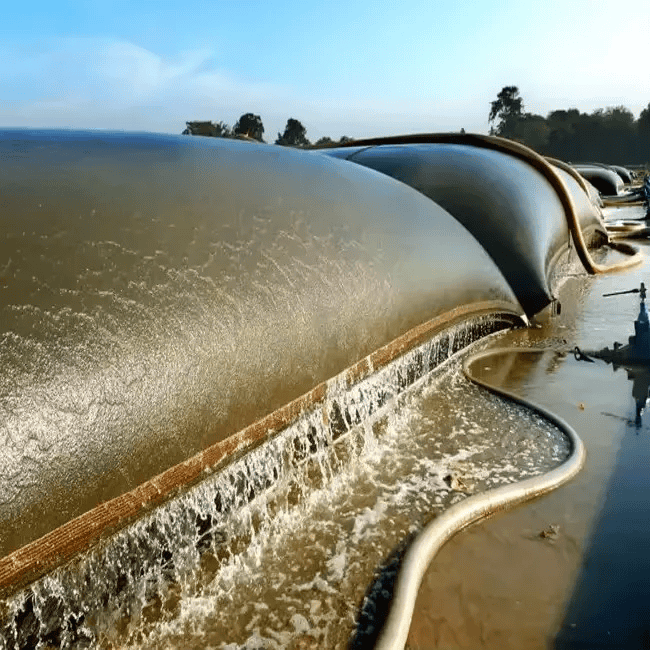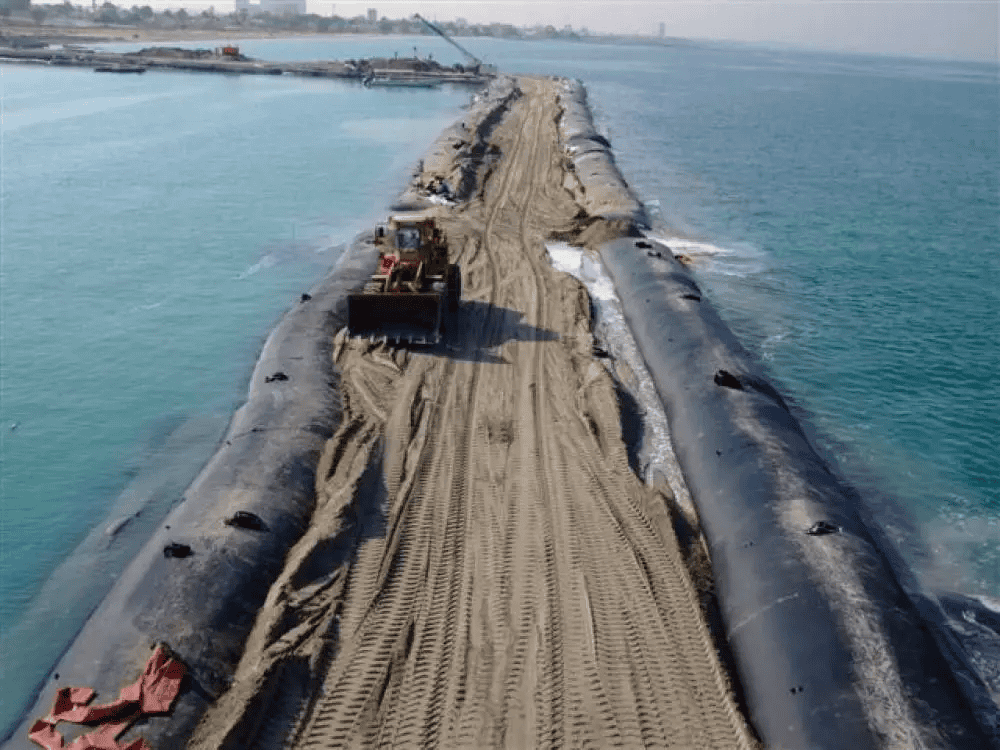In the dynamic realm of geotechnical engineering, geotubes have emerged as a game-changing solution, revolutionizing the way we approach various construction and environmental projects. These cylindrical geotextile containers, crafted from high-strength synthetic fabrics, have become a staple in a wide range of applications, offering unparalleled benefits in terms of durability, versatility, and cost-effectiveness.

Understanding Geotubes
Geotubes are essentially large, flexible tubes made from geotextile materials. These materials are engineered to be permeable, allowing water to pass through while retaining the solid particles within. This unique property makes itis ideal for a variety of functions, including soil stabilization, erosion control, sediment containment, and coastal protection.
The manufacturing process of geotubes involves weaving or knitting high-tenacity synthetic fibers, such as polyester or polypropylene, into a fabric. This fabric is then sewn or heat-welded to form the cylindrical shape of the geotube. The size and strength of the geotube can be customized based on the specific requirements of the project, making them a highly adaptable solution.

Key Features and Benefits
1. Durability and Strength
Geotubes are designed to withstand harsh environmental conditions, including high water pressure, strong currents, and abrasive materials. The high-strength geotextile fabric used in their construction provides excellent resistance to tearing, puncturing, and UV degradation, ensuring a long service life.
2. Versatility
One of the greatest advantages of geotubes is their versatility. They can be used in a wide range of applications, from coastal protection and erosion control to land reclamation and waste management. Geotubes can be filled with various materials, such as sand, gravel, dredged sediments, or soil, depending on the project requirements.
3. Cost-Effectiveness
Compared to traditional construction methods, geotubes offer significant cost savings. The installation process is relatively simple and requires less equipment and labor, reducing both the upfront and long-term costs of the project. Additionally, it can be reused or recycled, further minimizing the environmental impact and cost.
4. Environmental Friendliness
They are an environmentally friendly solution as they are made from synthetic materials that are non-toxic and biodegradable. They also help to reduce soil erosion and sedimentation, protecting the natural environment and aquatic ecosystems.
Applications of Geotubes
Coastal Protection
They are widely used for coastal protection, such as the construction of breakwaters, seawalls, and revetments. They can effectively reduce the impact of waves and storms on the shoreline, preventing erosion and protecting coastal infrastructure.

Erosion Control
In areas prone to erosion, such as slopes, riverbanks, and construction sites, geotubes can be used to stabilize the soil and prevent erosion. They can be filled with soil or other materials and placed along the slope or bank to provide a stable and durable barrier.
Sediment Containment
They are an effective solution for sediment containment in dredging projects, construction sites, and water treatment plants. They can be used to capture and store sediment, preventing it from entering waterways and causing environmental damage.
Land Reclamation
They can be used for land reclamation projects, such as the creation of new land from the sea or the expansion of existing land areas. They can be filled with sand or other materials and placed in the water to form a foundation for the new land.
Geotubes in the Global Market
The global market for geotubes is experiencing significant growth, driven by the increasing demand for sustainable and cost-effective geotechnical solutions. The market is expected to continue to expand in the coming years, as more countries and industries recognize the benefits of them and adopt them for their projects.
In the United States, they are widely used in coastal protection, erosion control, and land reclamation projects. The US Army Corps of Engineers has been a major user of them for many years, and their success has led to increased adoption by other government agencies and private companies.
In Europe, they are also becoming increasingly popular, particularly in countries such as the Netherlands, Germany, and the United Kingdom. These countries have a long history of dealing with coastal erosion and flooding, and they offer a practical and effective solution for these challenges.
In Asia, they are being used in a variety of applications, including coastal protection, riverbank stabilization, and waste management. Countries such as China, India, and Vietnam are investing heavily in infrastructure development, and they are expected to play a significant role in these projects.
Conclusion
Geotubes have emerged as a revolutionary solution in geotechnical engineering, offering a wide range of benefits in terms of durability, versatility, cost-effectiveness, and environmental friendliness. Their applications are diverse, from coastal protection and erosion control to sediment containment and land reclamation. As the global demand for sustainable and cost-effective geotechnical solutions continues to grow, geotubes are expected to play an increasingly important role in the future of construction and environmental projects.
[Here you can insert relevant pictures of geotubes in different applications, such as geotubes being installed on a coastline for coastal protection, or filled geotubes used for erosion control on a slope. You can use image hosting platforms and insert the appropriate image URLs. For example, if you have an image on Unsplash, you can insert the direct link to the image here.]
Whether you are a contractor, engineer, or project manager, geotubes offer a reliable and innovative solution for your geotechnical needs. Contact us today to learn more about how geotubes can benefit your next project.





